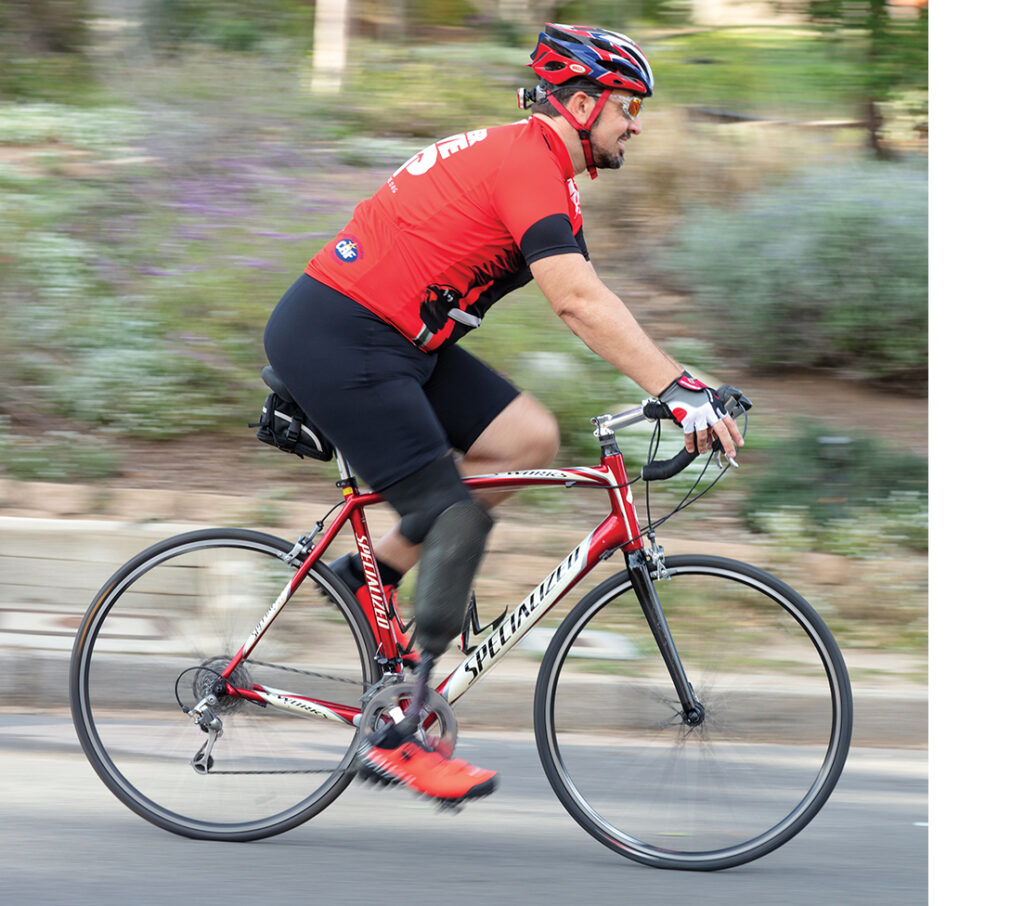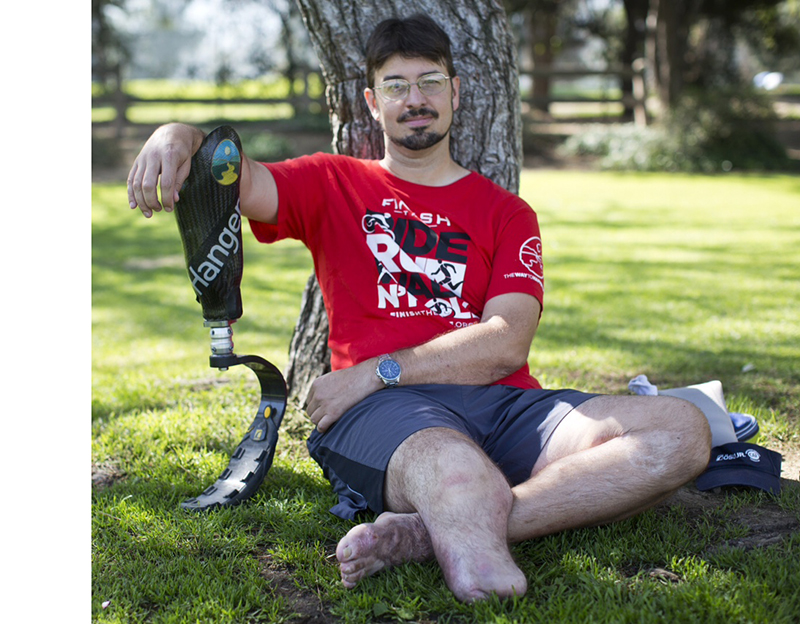by Mary Beth Skylis

Forty-four-year-old Damian Kevitt was 500 feet from the Los Angeles Zoo when a light-colored minivan drove into oncoming traffic, sideswiping him and his bicycle. Kevitt flew onto the hood of the vehicle before landing on the ground. A wheel of the minivan rolled over his right ankle, crushing the bones. The pain in his ankle forced Kevitt into unconsciousness. When he regained consciousness, he was looking at the undercarriage of the minivan, feeling it accelerate onto the highway. Instead of stopping to check on him, the driver took off with Kevitt trapped beneath the vehicle.
Kevitt recalls, “I spent the next 30 seconds to a minute as I was being dragged faster and faster down the freeway trying to get free. In doing so, I somewhat sacrificed my left leg as part of that and lost about 20 pounds of flesh in less than two minutes. I ended up dislodging myself. [The vehicle] kept going. He never stopped.”
What Kevitt experienced hints at a problem that isn’t new to Los Angeles. The United States ranks pretty low compared to other developed countries when it comes to hit-and-runs. Nationwide, hit-and-run incidents account for about 12 percent of collisions. In geographically dense regions, those numbers are even higher, but Los Angeles is the worst of the worst. In fact, 52 percent of collisions there are hit-and-runs.
Los Angeles Police Department (LAPD) Deputy Chief Blake Chow adds, “[LA has] historically been like that. I think one of the factors is that, compared to other large cities, LA is a car community. Everybody drives. If you go to New York, for example, there’s…a bigger public transportation network.”
Compared to other industrialized countries, the United States also sees higher fatalities in vehicle collisions. In the United Kingdom, four people in 100,000 lose their lives to collisions every year. In the United States, that number is more than 11 per 100,000. Kevitt recognizes that he was lucky to survive. “It was truly a miraculous tale. Somehow I survived that. My right leg was essentially ripped off. My foot was dangling by flesh. My left foot was shaved down to the bone. It was literally bone in large sections. I had lacerations. I had road burns to over 60 percent of my body. And somehow, I managed not to bleed out.”
Less than a year after Kevitt’s collision, he established a non-profit organization called Streets Are for Everyone (SAFE) to create a movement against preventable collisions. “[SAFE is] about street safety—about being able to go from point A to point B and not losing your life. That’s a problem in the US. The US compared to other first-world countries is the most dangerous country in the world.”

When asked if he thinks the incident changed his perspective, Kevitt jokes, “I felt like I got a better viewpoint of the world from the ground up.” He adds, “It did. It gave me a different perspective. It gave me a warped funny bone, I think. It gave me more of a focus. And it changed some of my viewpoints.” Kevitt says he knew that he wanted to focus his efforts on helping others. And it wasn’t long before he determined how to do it.
On Trauma and Finishing the Ride
Prior to Kevitt’s collision, he worked as a church counselor, focusing his efforts on those who struggled with post-traumatic stress disorder and trauma. That experience gave him the tools to target his trauma in a unique way. Kevitt explains that if you experience a traumatic event, returning to the scene and completing the task that you intended to complete can create a positive effect. “Trauma affects and interrupts your normal daily routines. And a trick that I know is to refinish those things that were interrupted. And also to finish the thing that you were going to do.” He knew while he was in the hospital that he wanted to get back on his bicycle.
Creating goals to work toward the future is another trick he learned as a counselor. “Anyone is going to be hung up on the trauma, and a tool to get out of it is to focus on future goals. So I used every trick in the book that I knew on myself. One of them was to finish the ride. The other goal that I set at that exact point in time [was running the LA Marathon]. And that’s what I did.”
The first Finish the Ride event, which led to SAFE’s formation, was held in 2014, leading Kevitt to retrace his bicycle journey to the zoo.
LAPD on Collisions and Street Safety
The future of hit-and-runs and general street safety is uncertain in Los Angeles. But Chow adds a hopeful statistic: “As of December 2020, we recorded 19,212 hit-and-runs, and that’s down 28 percent from the year before.” Additionally, 228 of those hit-and-runs required hospitalization, and 52 were fatal incidents. Compared to 2019, the fatalities were down by about 16 percent.

Changing strategies had been a big part of the LAPD’s approach to creating safer streets. “When I first [joined LAPD], the answer we had for everything was to go out and write citations. As things have evolved, it became apparent that the only way we’re going to impact the roads is through a good collaboration between the police department, the department of transportation, and community groups like SAFE,” Chow says.
“In the fatals that I’ve seen, sometimes they’re preventable and sometimes they’re not,” he says. “But our job is never done when it comes to educating drivers.” Although much of the work surrounding street safety may involve targeting dangerous corridors and holding hit-and-run offenders accountable, another key part of change is targeting education.
For those who are interested in playing a part in street safety, Chow suggests getting involved with your local traffic division. “At each traffic division [in LA], there’s an opportunity for community members to get involved and be part of an advisory group to discuss what they’re seeing as far as traffic issues go. Before COVID we were working on a public safety message [to encourage travelers] to slow down and pay more attention. There are always opportunities to get involved with projects that are being spearheaded by the traffic divisions.”
Images by Tim Sabatino.
Learn more about Streets Are For Everyone (SAFE) and Finish the Ride.



